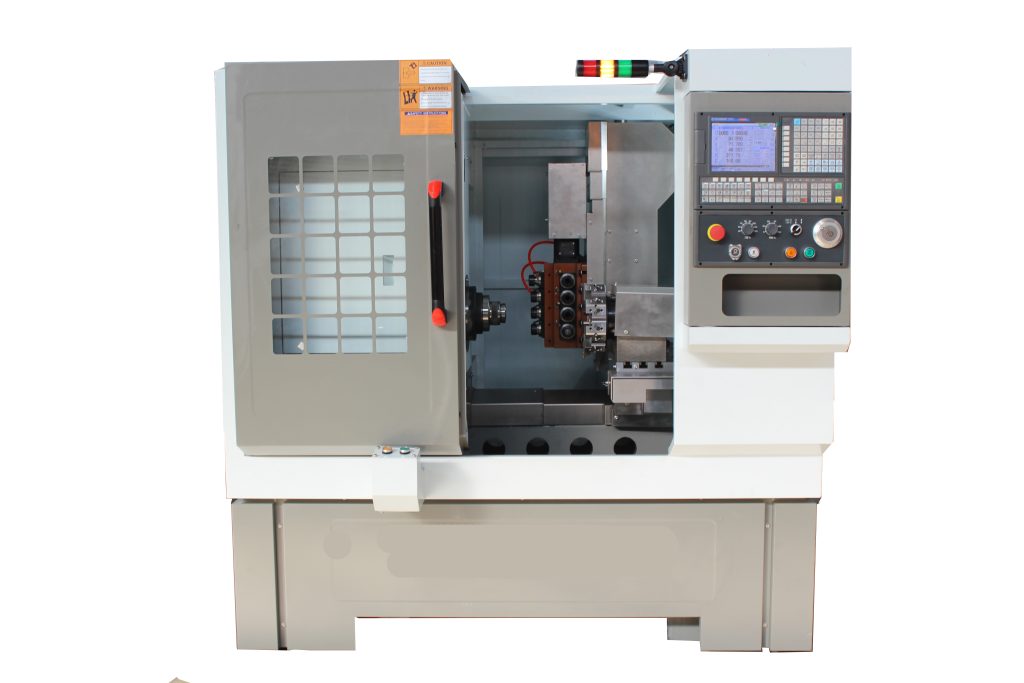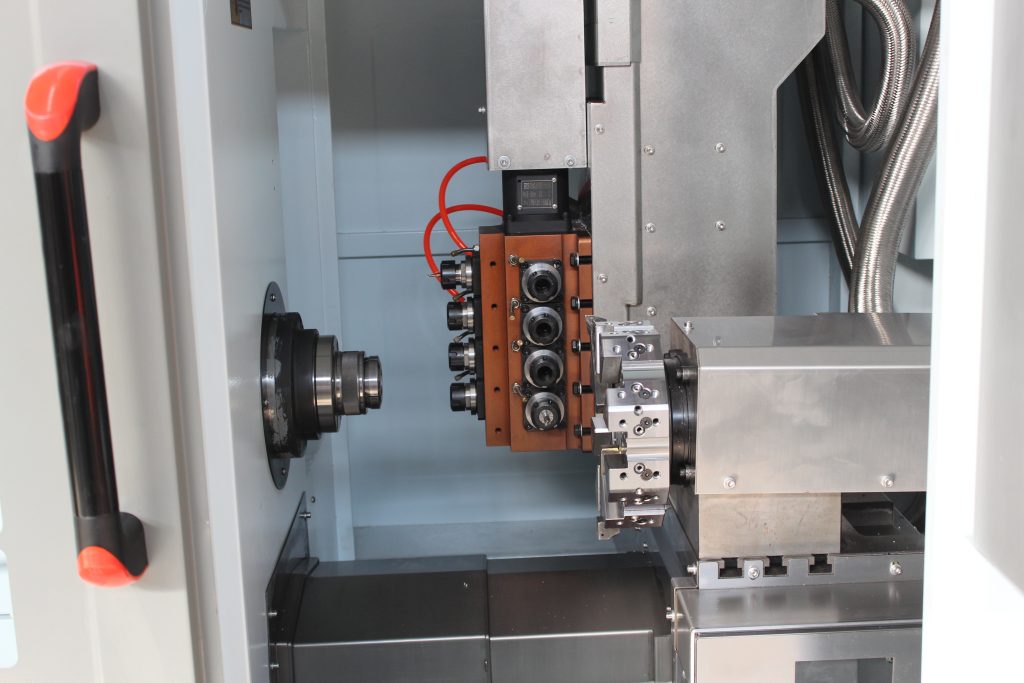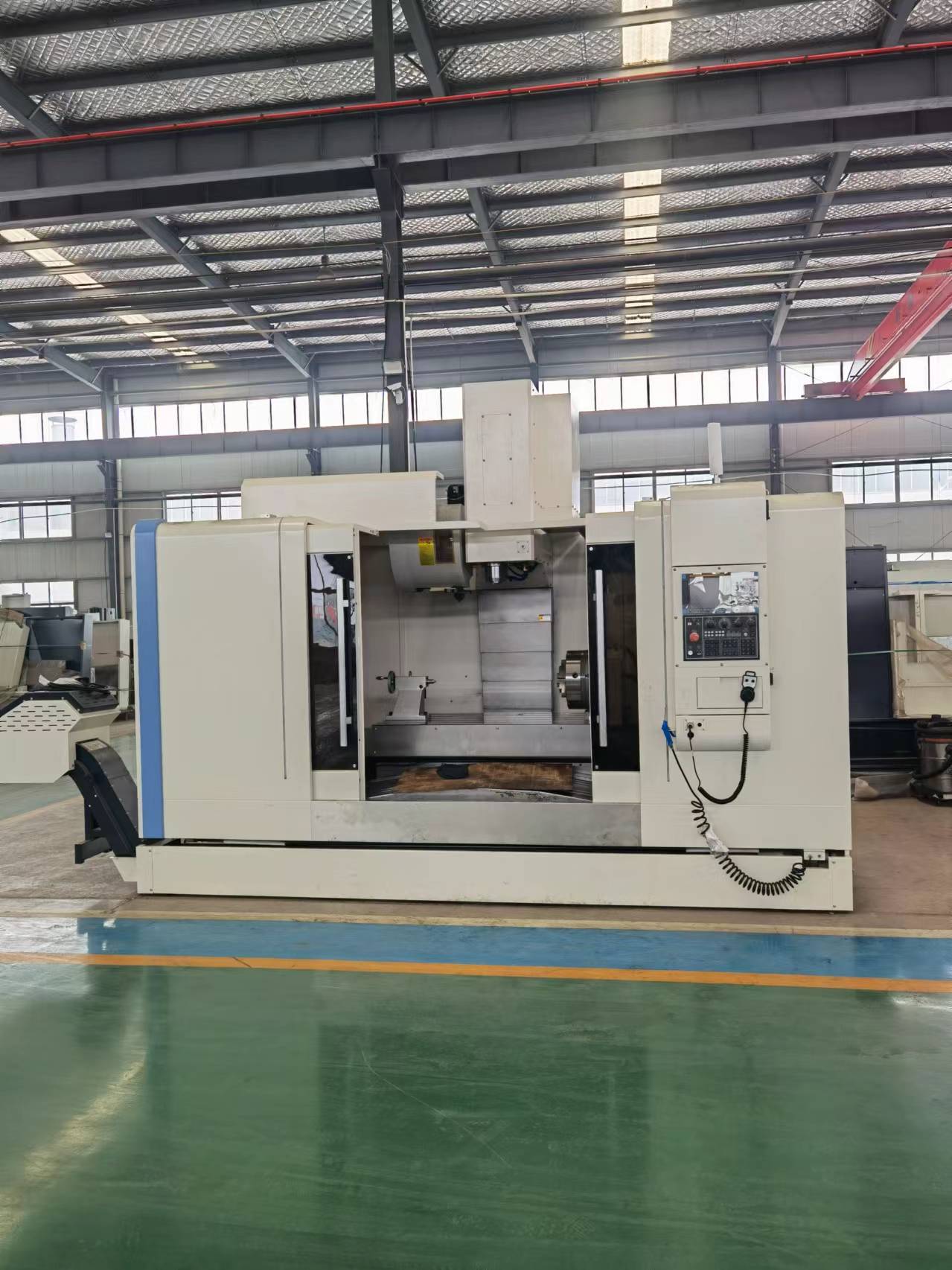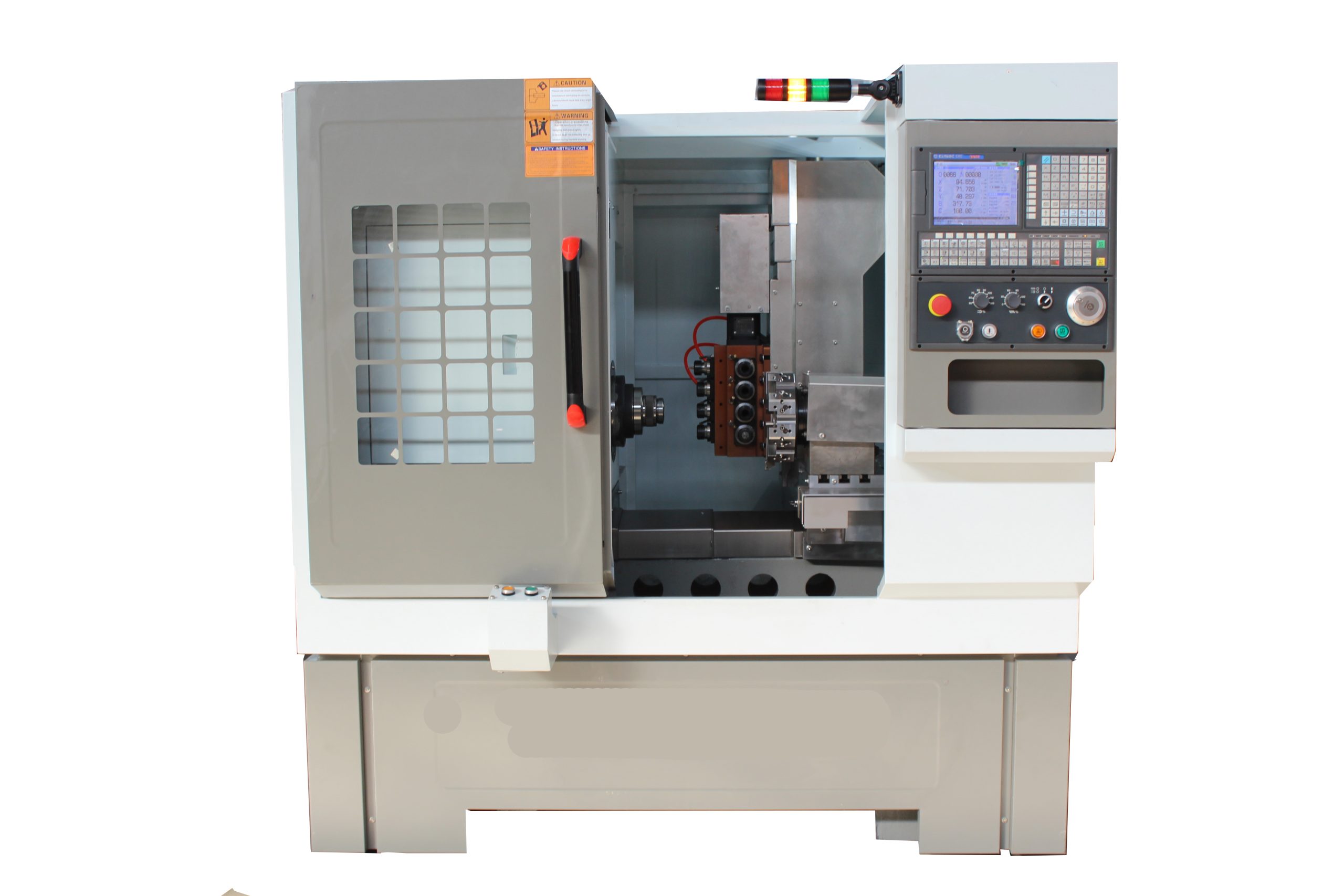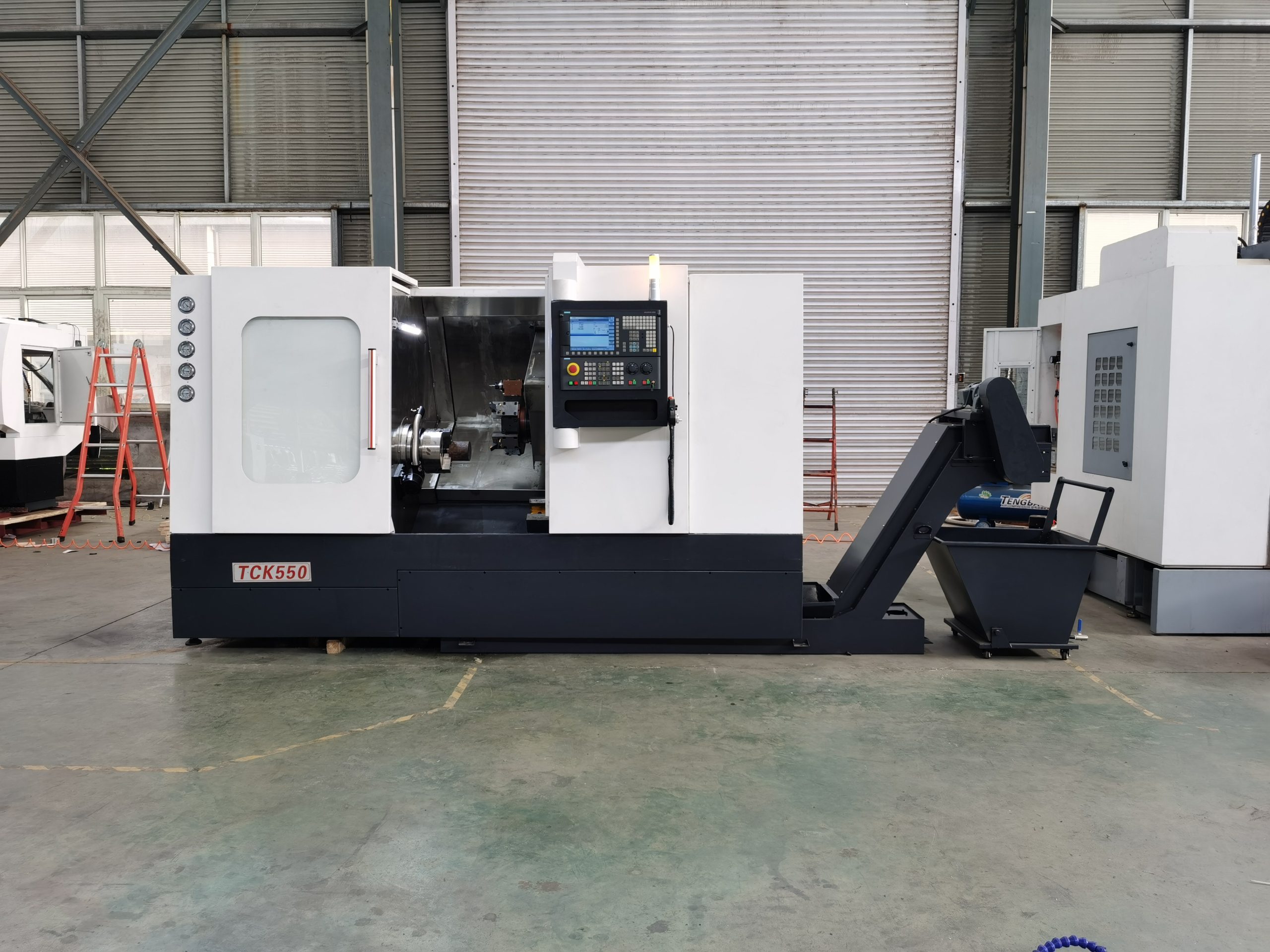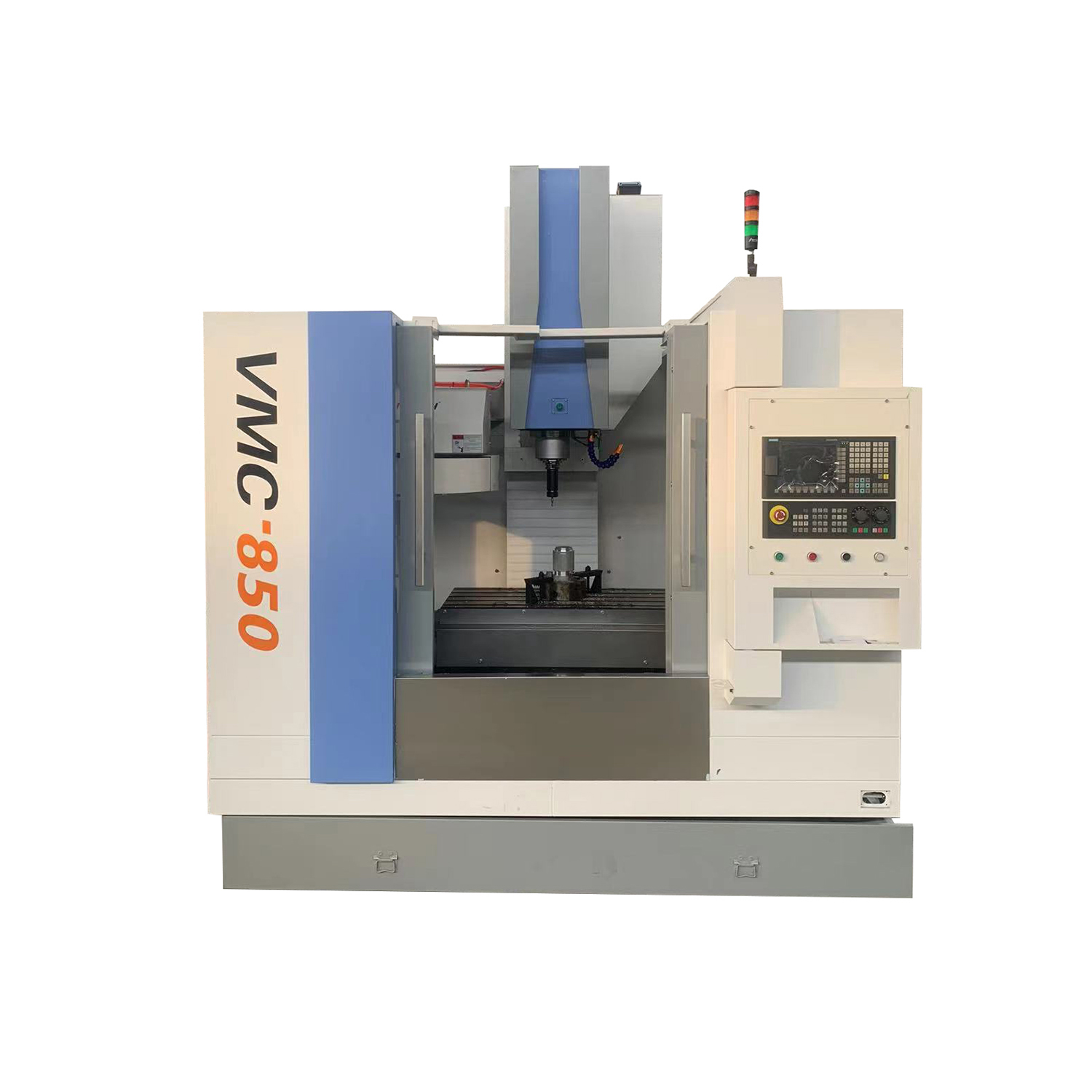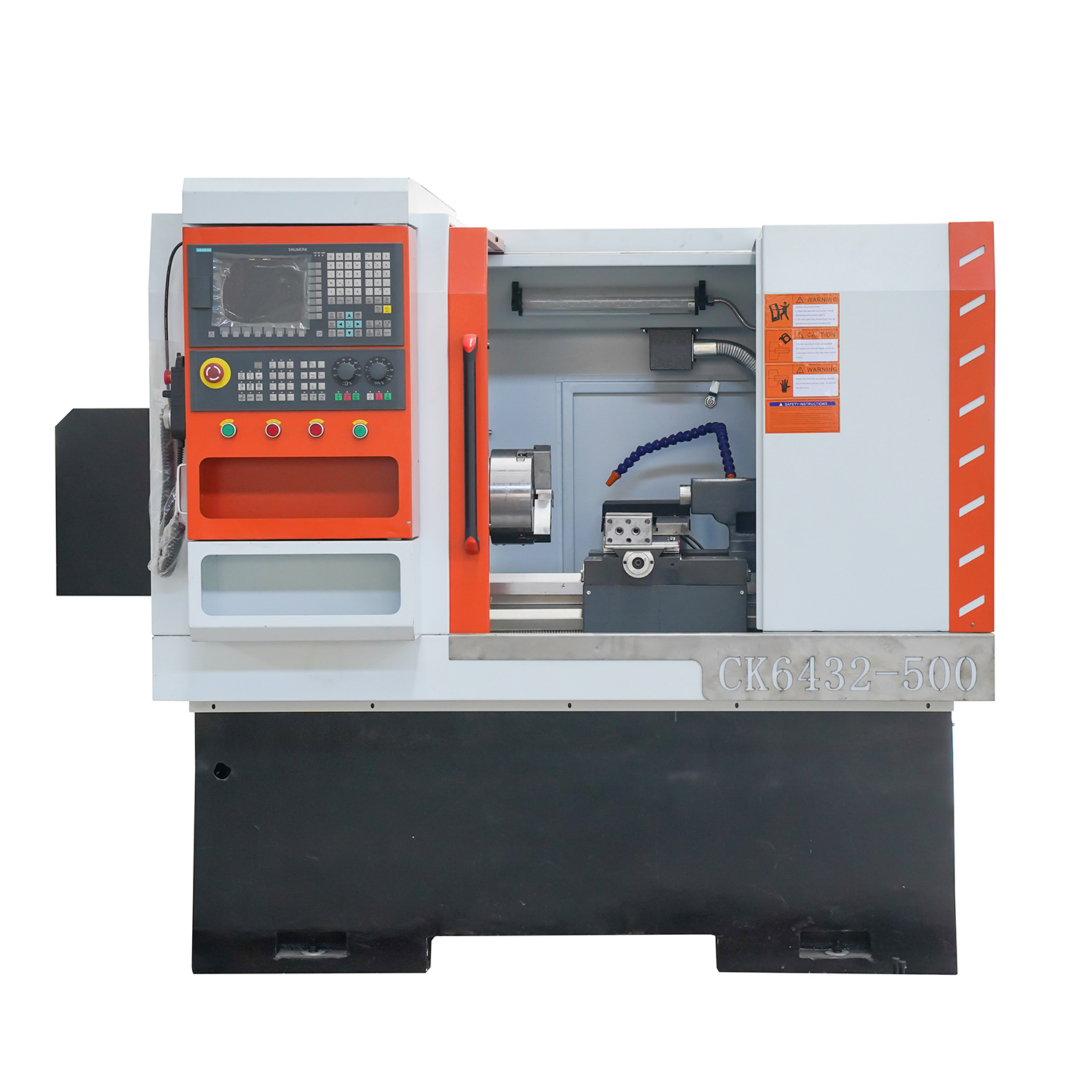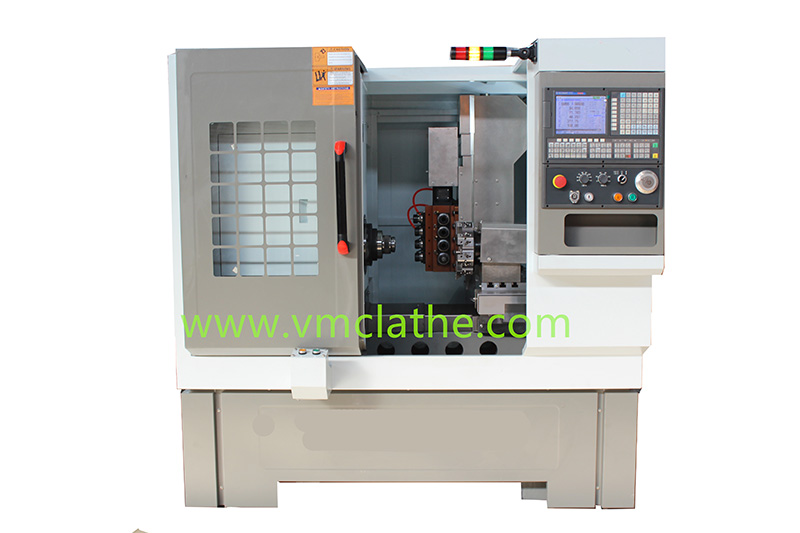When choosing a CNC lathe suitable for mass production, you need to focus on the equipment’s production efficiency, stability, degree of automation and long-term maintenance costs. Here are some key factors and suggestions to help you make a wise choice:
________________________________________
1. Production efficiency
(1) Spindle speed and power
A. High speed: Choose a lathe with a spindle speed of more than 4000 rpm, which is suitable for high-speed processing.
B. High power: The spindle power is recommended to be above 11 kW to ensure that it can handle high-intensity cutting tasks.
(2) Turret and tool change speed
A. Multiple tool positions: Choose a turret with 12-24 positions to support continuous processing of multiple processes.
B. Fast tool change: The servo turret tool change time should be within 1 second to reduce non-processing time.
(3) Processing range
A. Large diameter: Choose a lathe with a larger maximum processing diameter to accommodate a variety of workpieces.
B. Long travel: Ensure that the Z-axis travel is sufficient to process long-axis workpieces.
________________________________________
2. Stability and precision
(1) Bed structure
A. Inclined bed: Inclined bed design has high rigidity and good chip removal effect, suitable for mass production.
B. High-rigidity material: Select a high-strength cast iron or mineral casting bed to ensure long-term stability.
(2) Guide rail type
A. Linear guide rail: Suitable for high-speed and high-precision processing.
B. Hard rail: Suitable for heavy cutting and good wear resistance.
(3) Accuracy requirements
A. Positioning accuracy: Select a lathe with a positioning accuracy within ±0.005 mm.
B. Repeat positioning accuracy: Ensure that the repeat positioning accuracy is within ±0.002 mm.
________________________________________
3. Degree of automation
(1) Automatic loading and unloading
A. Robot loading and unloading: Equipped with robots or manipulators to achieve fully automated production.
B. Bin system: Select a lathe with a bin to support continuous processing.
(2) CNC system
A. High-end CNC system: such as FANUC, SIEMENS, supporting multi-axis linkage and intelligent processing.
B. Automation functions: such as automatic tool setting, tool compensation, remote monitoring, etc.
(3) Tailstock and center rest
A. CNC tailstock: high degree of automation, reducing manual intervention.
B. Automatic center rest: suitable for efficient processing of long-axis workpieces.
________________________________________
4. Long-term maintenance cost
(1) Brand and after-sales service
A. Well-known brand: choose a brand with high reliability, such as DMG MORI, MAZAK, HAAS, etc.
B. After-sales service: ensure that the supplier provides timely technical support and spare parts supply.
(2) Energy consumption and efficiency
A. Energy-saving design: choose a lathe with low energy consumption to reduce long-term operating costs.
B. Efficient processing: reduce processing time and tool wear by optimizing processing parameters.
(3) Maintenance convenience
A. Modular design: facilitates the rapid replacement and maintenance of key components.
B. Self-diagnosis function: The CNC system should have a fault self-diagnosis function to reduce downtime.
________________________________________
5. Other considerations
(1) Processing materials
A. Select the appropriate lathe configuration based on the hardness, toughness and other characteristics of the processing material.
B. If processing stainless steel or titanium alloy, a high-rigidity, high-power lathe should be selected.
(2) Production environment
A. Workshop space: Make sure the lathe size is suitable for the workshop layout.
B. Environmental requirements: Such as temperature and humidity control to ensure stable operation of the equipment.
(3) Budget and return on investment
A. Initial cost: Select the appropriate configuration based on the budget.
B. Return on investment: Evaluate the production efficiency and long-term benefits of the equipment.
________________________________________
6. Recommended configuration
(1) Entry-level mass production
A. Spindle speed: 4000 rpm.
B. Turret: 12-station servo turret.
C. CNC system: FANUC 0i-TF.
D. Automation: Simple manipulator can be selected.
(2) Mid-range mass production
A. Spindle speed: 6000 rpm.
B. Turret: 16-station servo-powered turret.
C. CNC system: SIEMENS 828D.
D. Automation: Robot loading and unloading system.
(3) High-end mass production
A. Spindle speed: 10000 rpm.
B. Turret: 24-station servo-powered turret.
C. CNC system: FANUC 31i or SIEMENS 840D.
D. Automation: Fully automated production line with silo and robot.
________________________________________
7. Summary
When choosing a CNC lathe suitable for mass production, it is necessary to comprehensively consider production efficiency, stability, degree of automation and long-term maintenance costs. According to specific needs and budget, choose the appropriate configuration to ensure that the equipment can meet the requirements of efficient and high-quality production.

